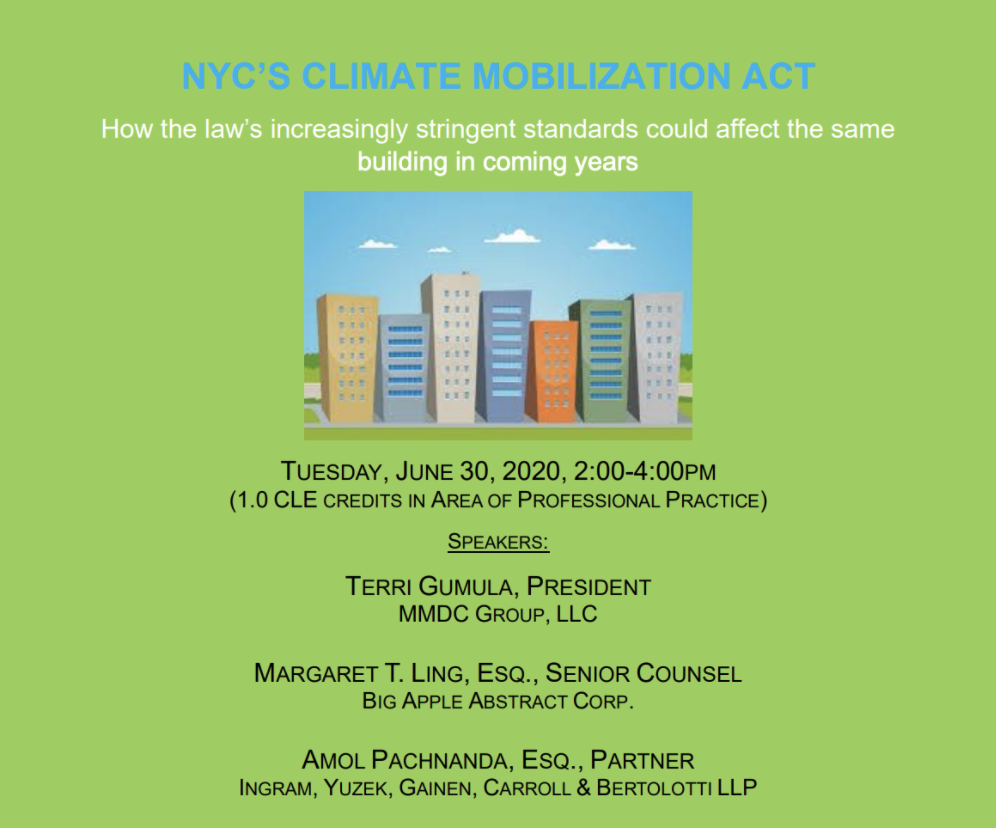
On June 30, AABANY hosted a CLE program on the New York City Climate Mobilization Act’s Impact on Real Estate, featuring prominent industry leaders. The panel outlined the changes imposed by the recently passed Climate Mobilization Act, specifically Local Law 97, and their effects on both tenants and landlords. Speakers included Margaret Ling, Senior Counsel at Big Apple Abstract Corp. and Co-Chair of the AABANY Real Estate Committee; Amol Pachnanda, Partner at Ingram Yuzek LLP and Co-Chair of the AABANY Real Estate Committee; and Terri Gumula, President of MMDC Group, LLC.
The panel began by discussing the role of ESG (environmental, social, and governance) standards on real estate investments. Public emphasis has grown on corporate social responsibility with legislation and corporate mandates placing legal and social pressure on companies to adopt environmentally conscious practices. Investors are also increasingly looking toward ESG-oriented rating systems such as the GRESG as a holistic, financial benchmark. As such, investors have begun to adopt a variety of approaches to minimize negative environmental impact. Those that wish to adopt low-cost measures have opted for greater emphasis on existing maintenance protocols, cleaner filters, lighting upgrades, among others. High-cost measures include heating and cooling upgrades, boiler conversions, installation of variable speed control drives and solar panels. Generally, the push toward sustainable construction has also increased long-term performance as planning for less carbon emissions mitigates the potential losses incurred as a result of future legislation.
The panel then outlined the specifics of the New York City Climate Mobilization Act. Passed in April 2019, the Climate Mobilization Act was a series of bills and resolutions that included Local Law 97, which had stated a goal of reducing greenhouse gas emissions (“GHG”) by 80% by 2050 with an interim goal of reducing GHG by 40% by 2030. The new regulations apply to buildings over 25,000 square feet and also provide incentives for green roofs, PACE financing, and wind turbines along with other environmentally friendly building practices. Adjustments to emission limits are very limited but are available on a temporary basis with applications due July 1, 2021. Rationales for adjusting emissions limits include lack of space and financial hardship. If approved, exemptions cannot exceed one to three years, and the application will need to be refiled. Buildings with one or more rent-stabilized units have alternate requirements for the time being. As of now, rent regulated buildings require 35% of their tenants to be rent-stabilized to qualify for prescriptive measures that offer alternate standards.
We thank all the panelists for their valuable time and insights. If you would like to learn more about AABANY’s Real Estate Committee, click here.

